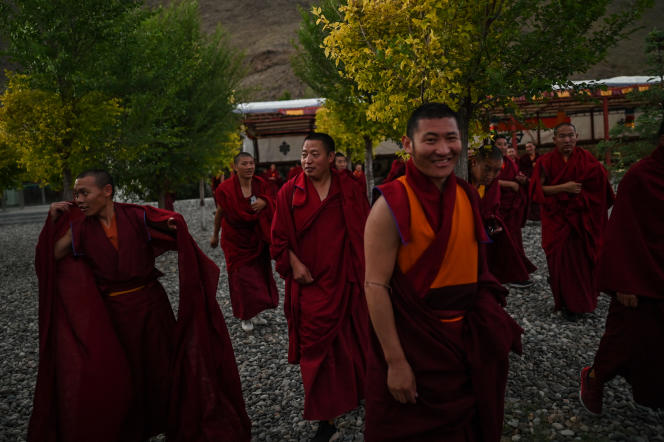French Clément Sans recently became a Zen monk, ordered under the name of Tozan (“the mountain of the peach tree”). Each month, he sends us a letter that shares with us his reflections and his unique, almost timeless daily life. After two years spent at the Antai-ji temple in the mountains of Honshu Island, he now continues his practice in Kyoto, the former imperial capital of Japan.
October letter. Kyoto has suddenly fallen into the cold. The autumn rain, the one that the Japanese love so much and which announces the harvest of these mushrooms that can be mixed with hot rice, has returned to the old capital. Higher up, Mount Hiei, like a sacred rampart protecting spirits, dominates the city in a hem of mist.
In the temples, the month of October opens with the ceremony of darumaki, the anniversary of Daruma Daishi’s death. Better known in the West as Bodhidharma, he is the first Chinese patriarch and founder of the Chan school. The very one who, at Ve century, meditated for nine long years facing the wall of a cave, standing in strict meditation, with a calm and concentrated mind. It is from this practice of simple sitting, brought back to Japan by Eisai after a trip to China at the end of the twelfthe century, that contemporary Zen is the heir.
But, beyond the marks of gratitude and the memorial services organized in all the Zen temples of the country, what does this devotion to the old masters mean and these words so often repeated in our tradition, “follow the path of the patriarchs” ? These commemorations, which raise the question of the place and representation of “masters” in Buddhism, have a very special resonance this year.
What lies behind the abuses in Buddhism
I have received many messages from France informing me of a scandal going through the Tibetan Buddhist communities in Europe (after the broadcast on Arte of the investigation “Buddhism, the law of silence”, September 13 on television and since September 6 on arte.tv). Sexual violence, psychological pressure, embezzlement of money… It is always healthy for “speech to be released”, for the victims to accuse, for the suffering to be heard, allowing, I hope, firm and enlightened justice.
As a Zen monk living in Japan, I really have nothing to say about Tibetan traditions, which are absolutely unknown to me. The Dalai Lama, for Japanese monks, is as important as a pop singer, and Tibetan masters of different traditions simply represent nothing in the orthodoxy of our practice. Perhaps there is more distance between Japanese Buddhism and Tibetan traditions than between Christians and Muslims.
You have 53.65% of this article left to read. The following is for subscribers only.
Buddhism: “Behind the media reception of abuse hides so many things to talk about…”

